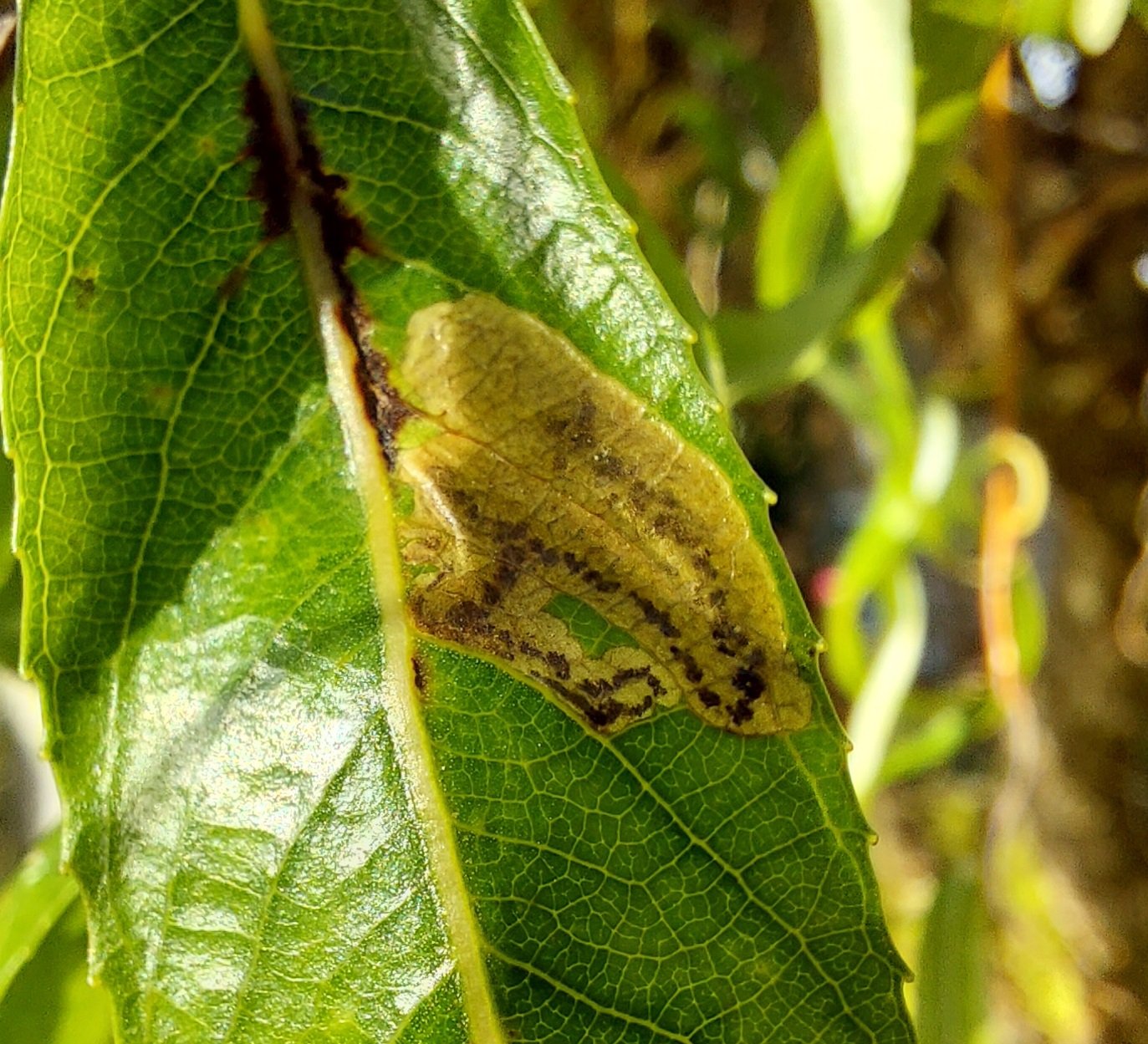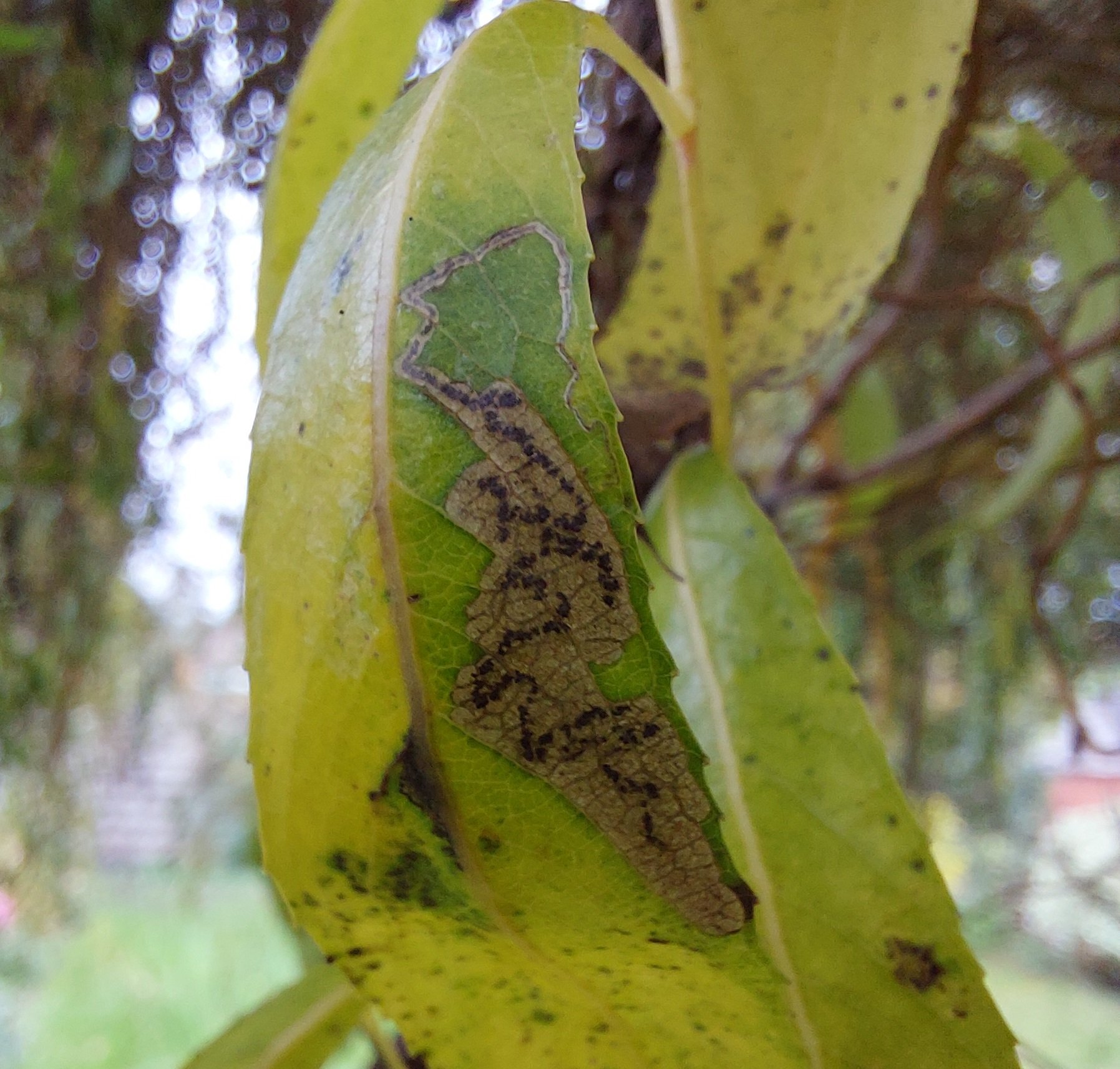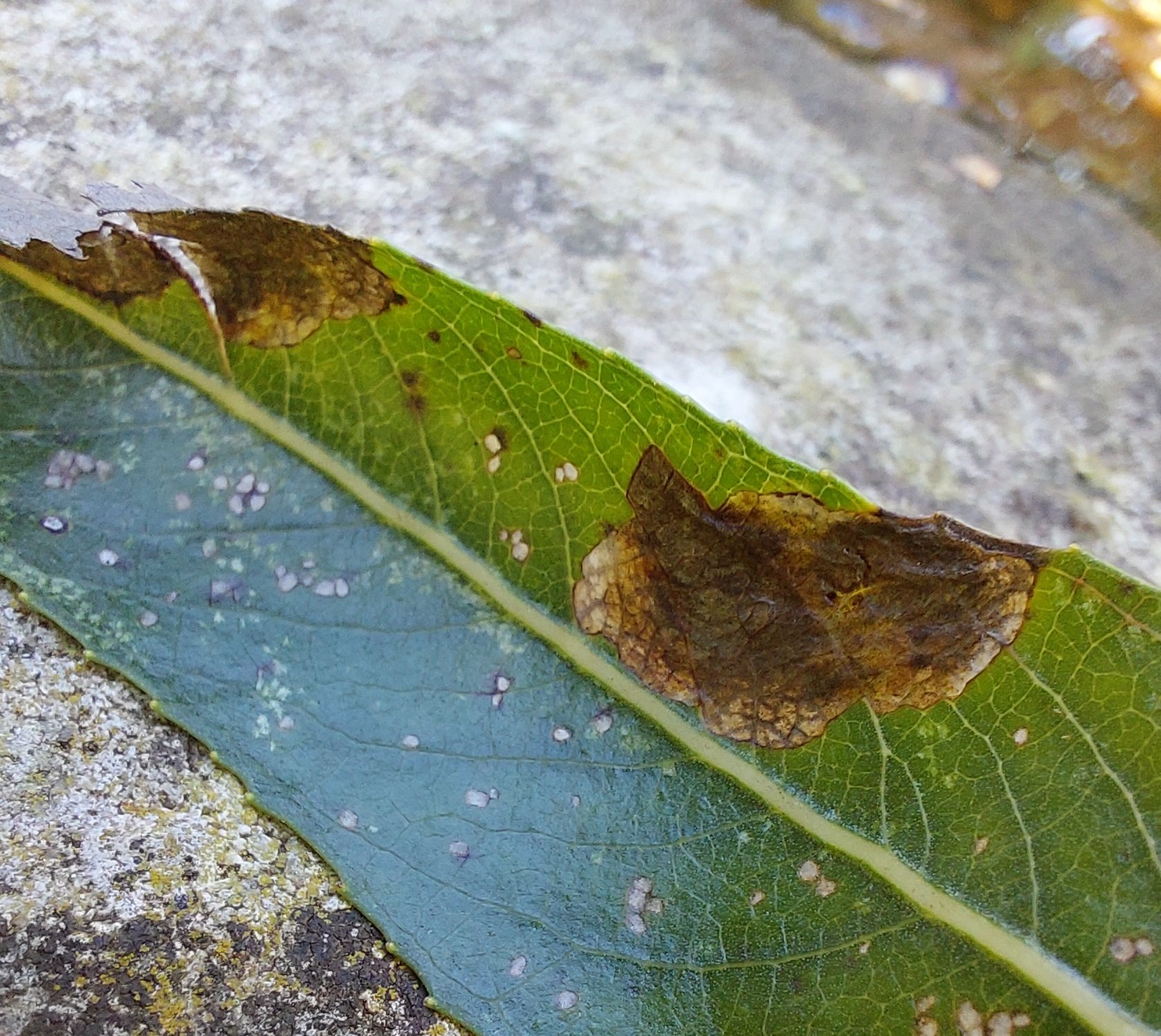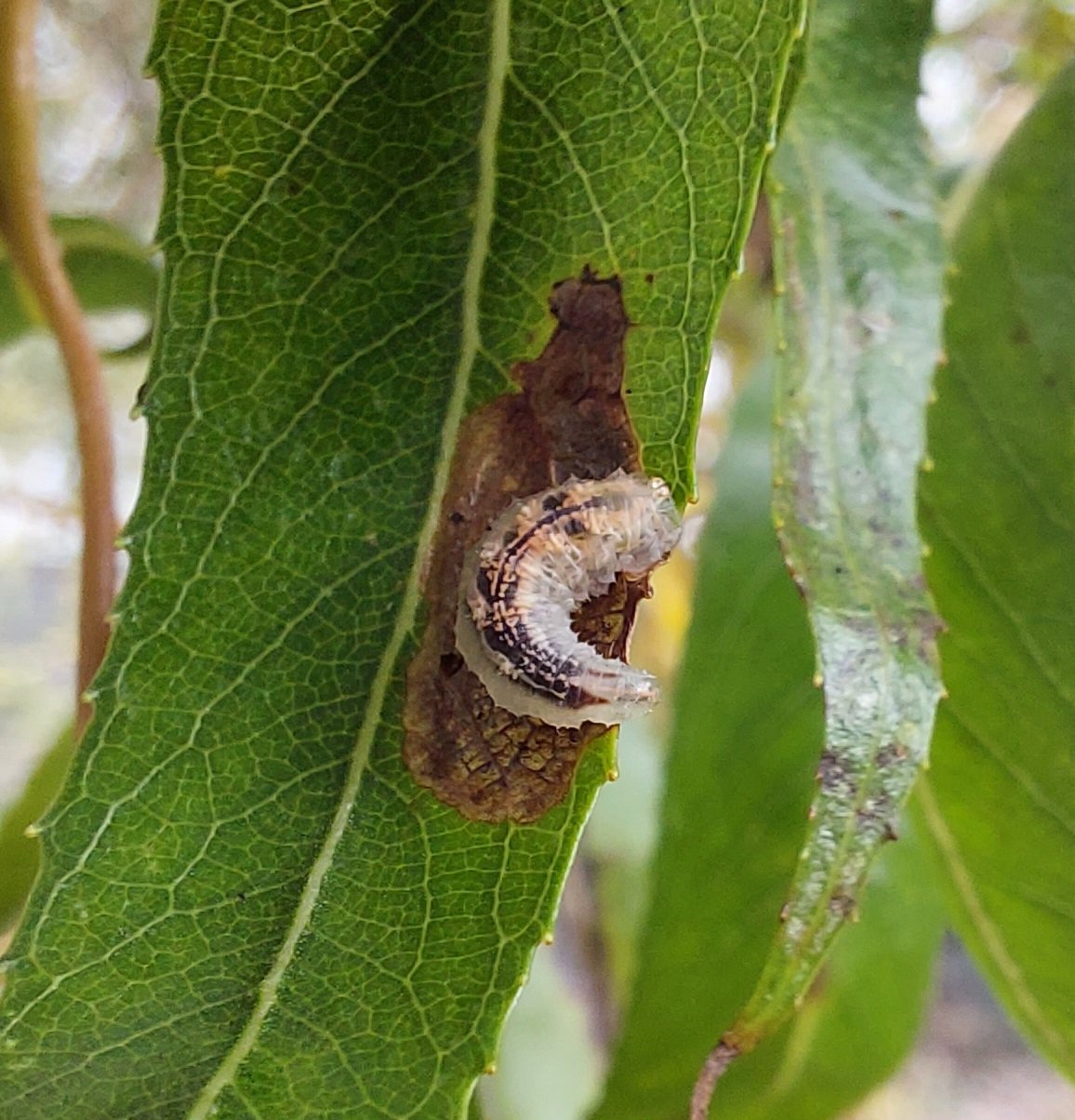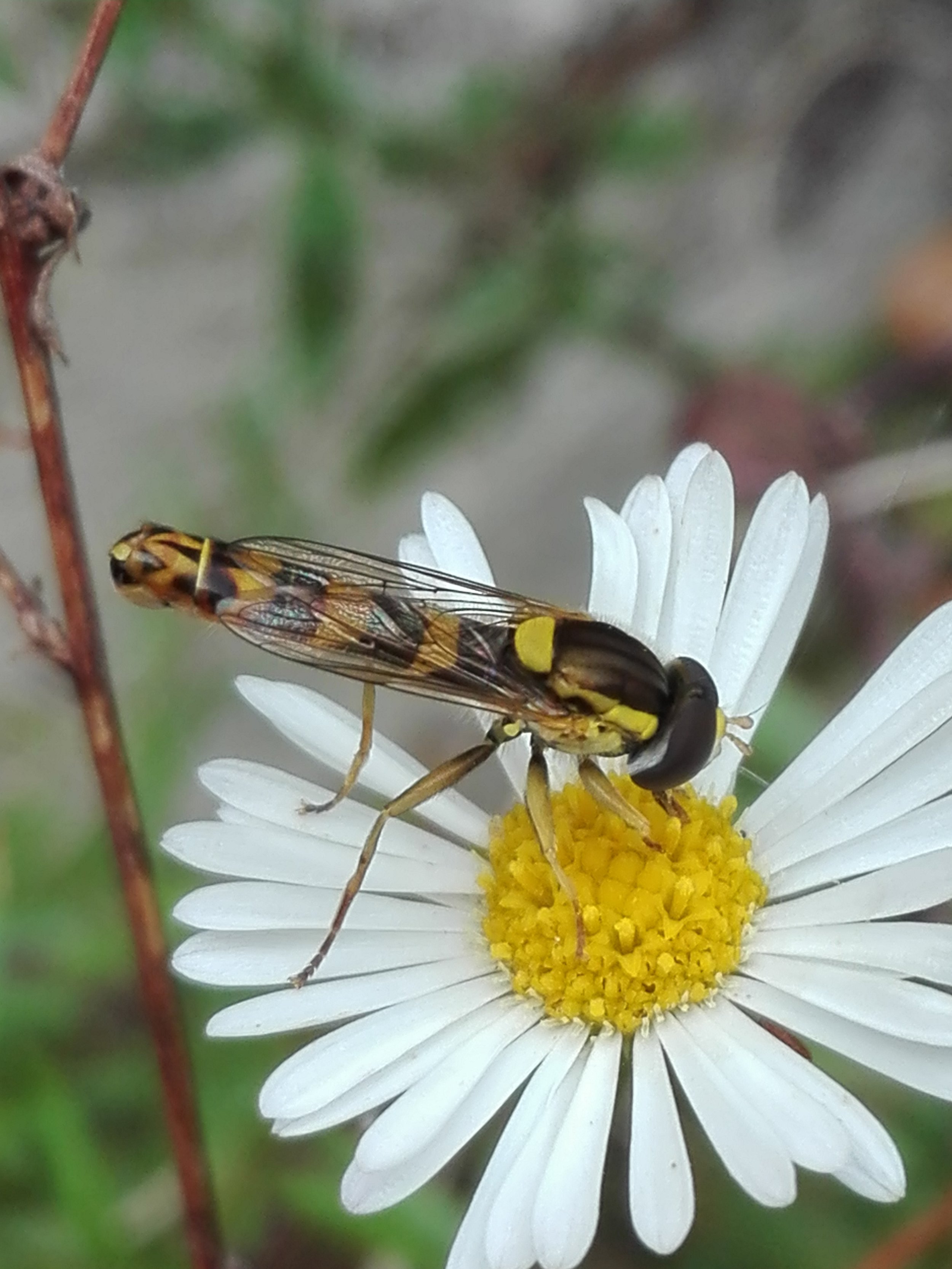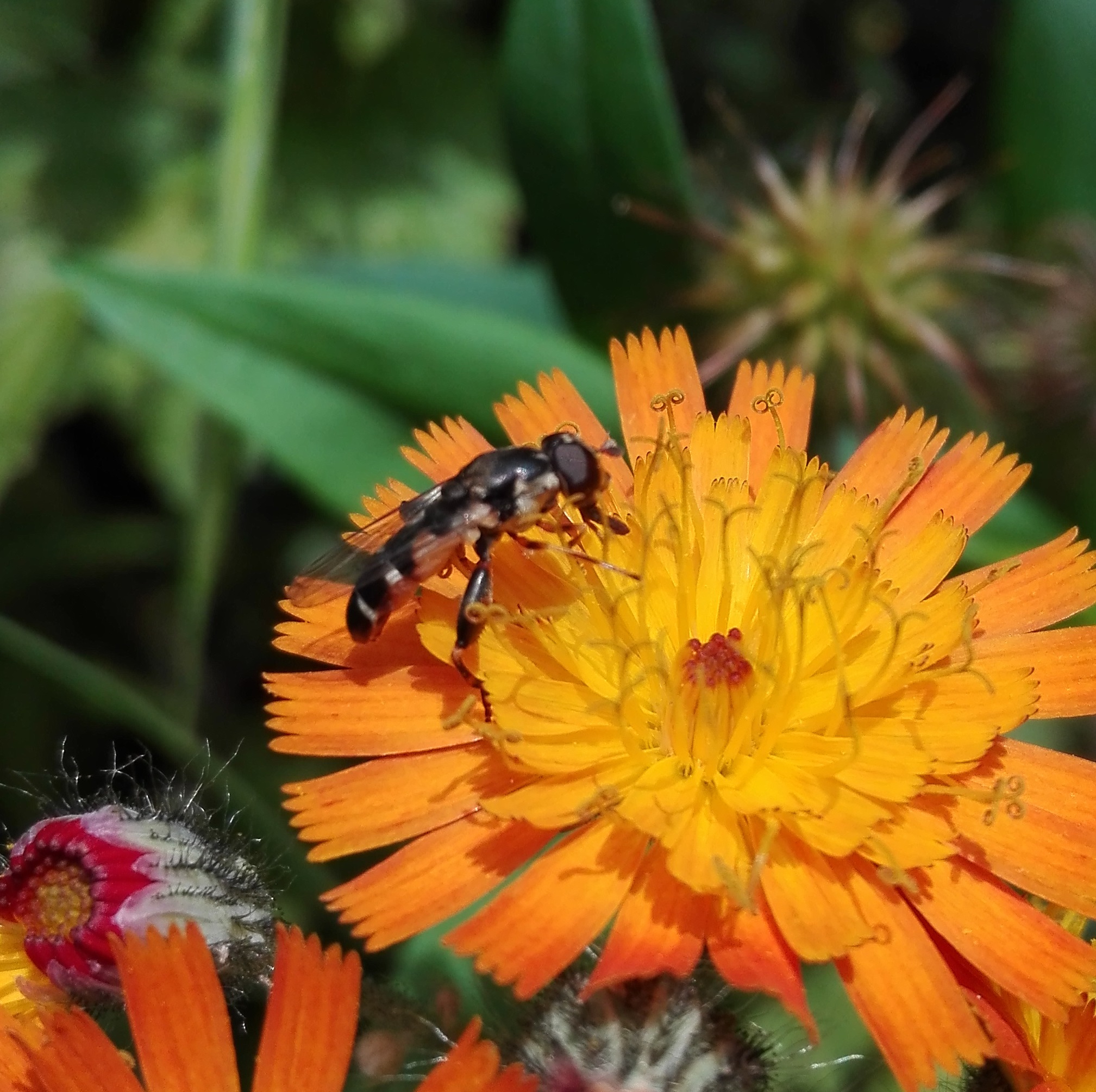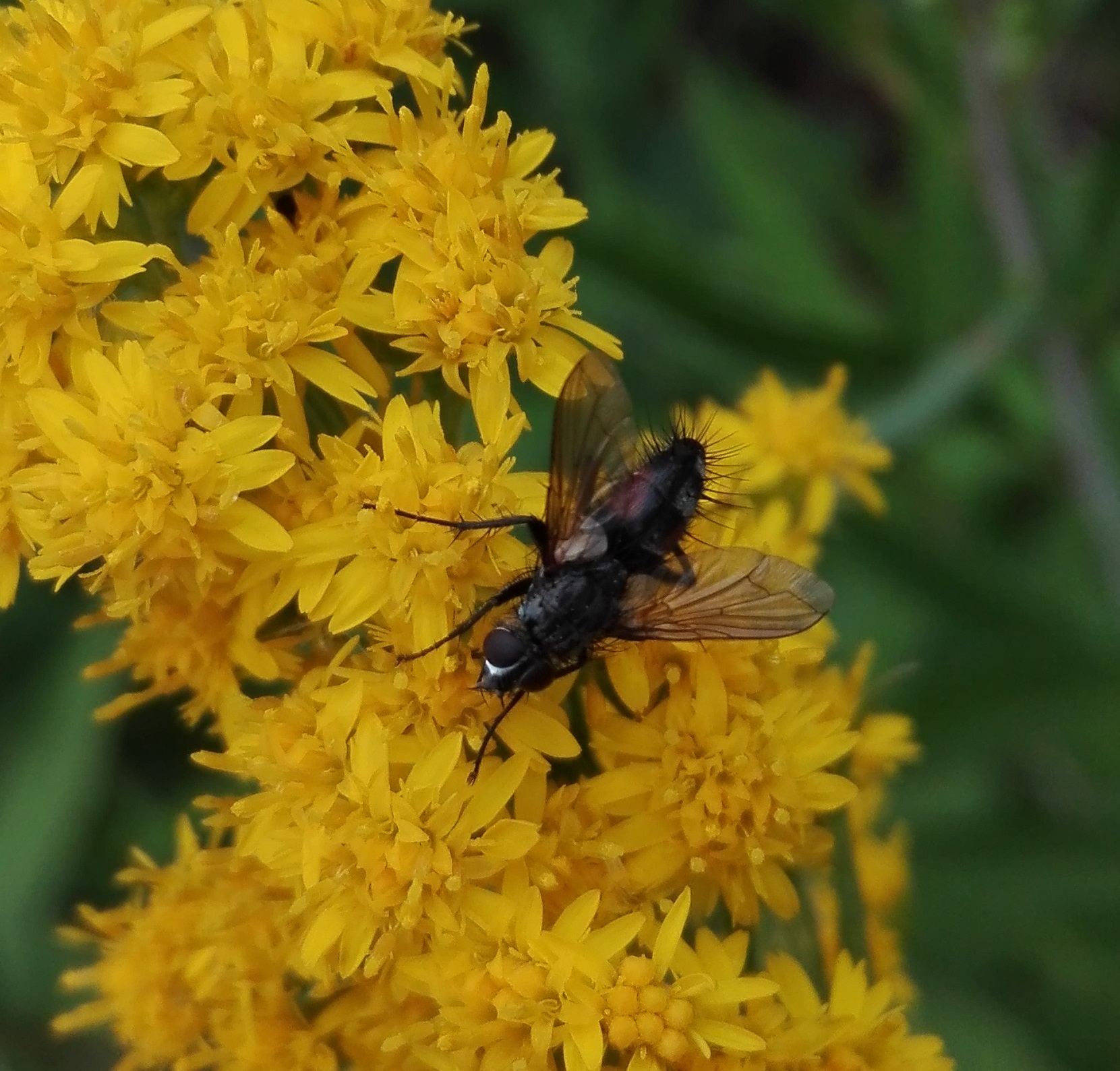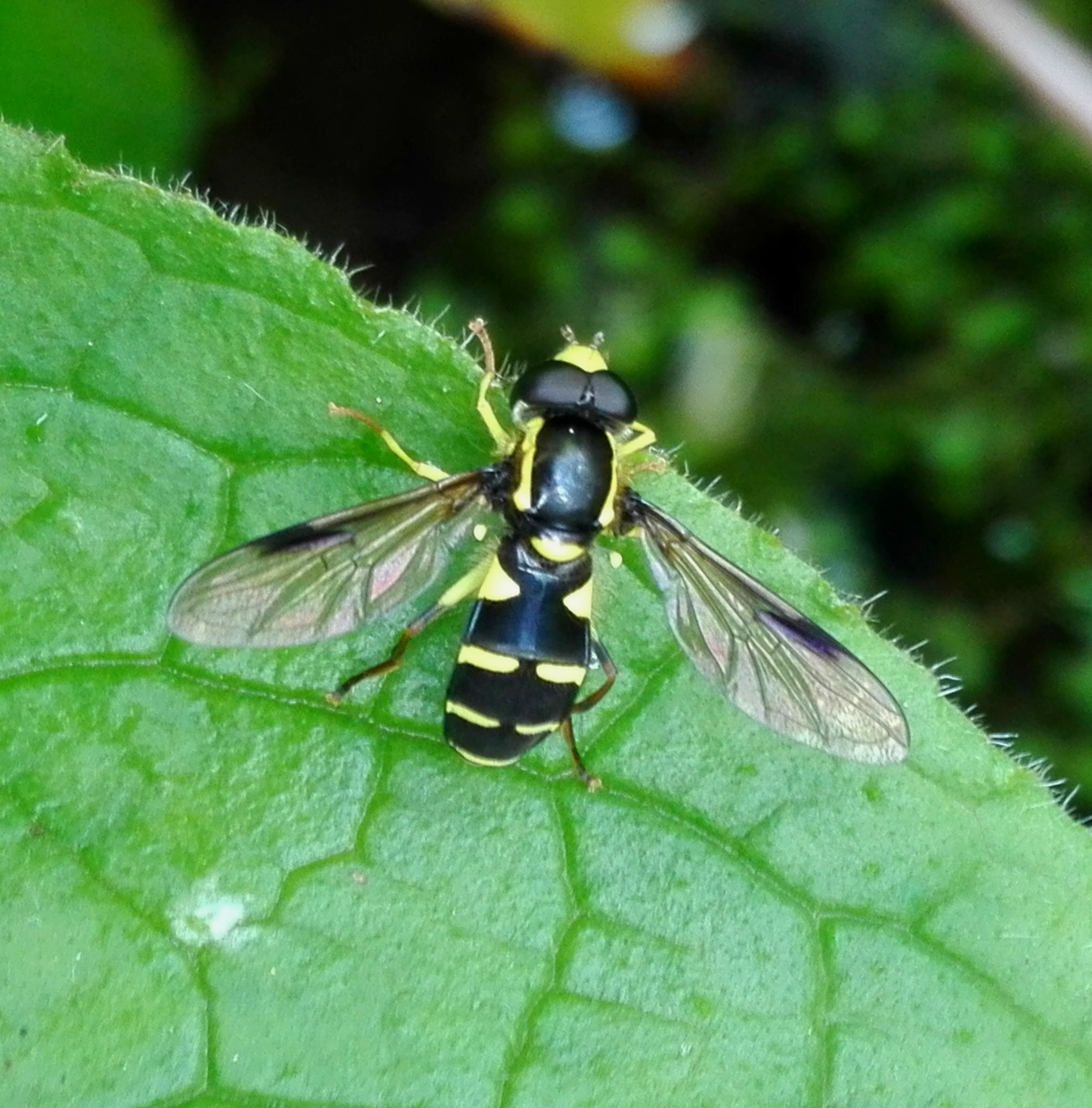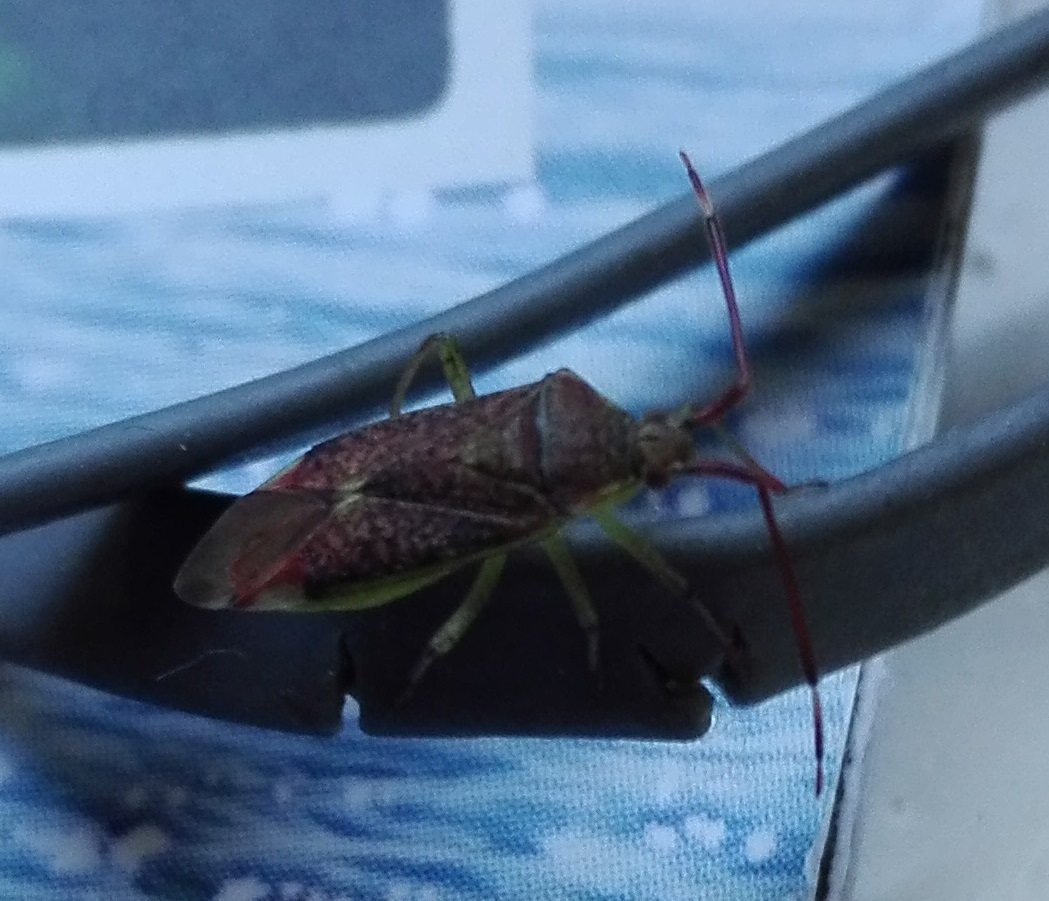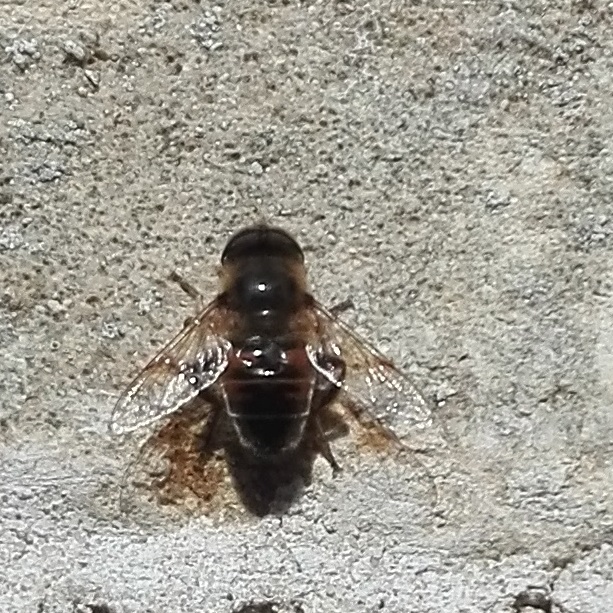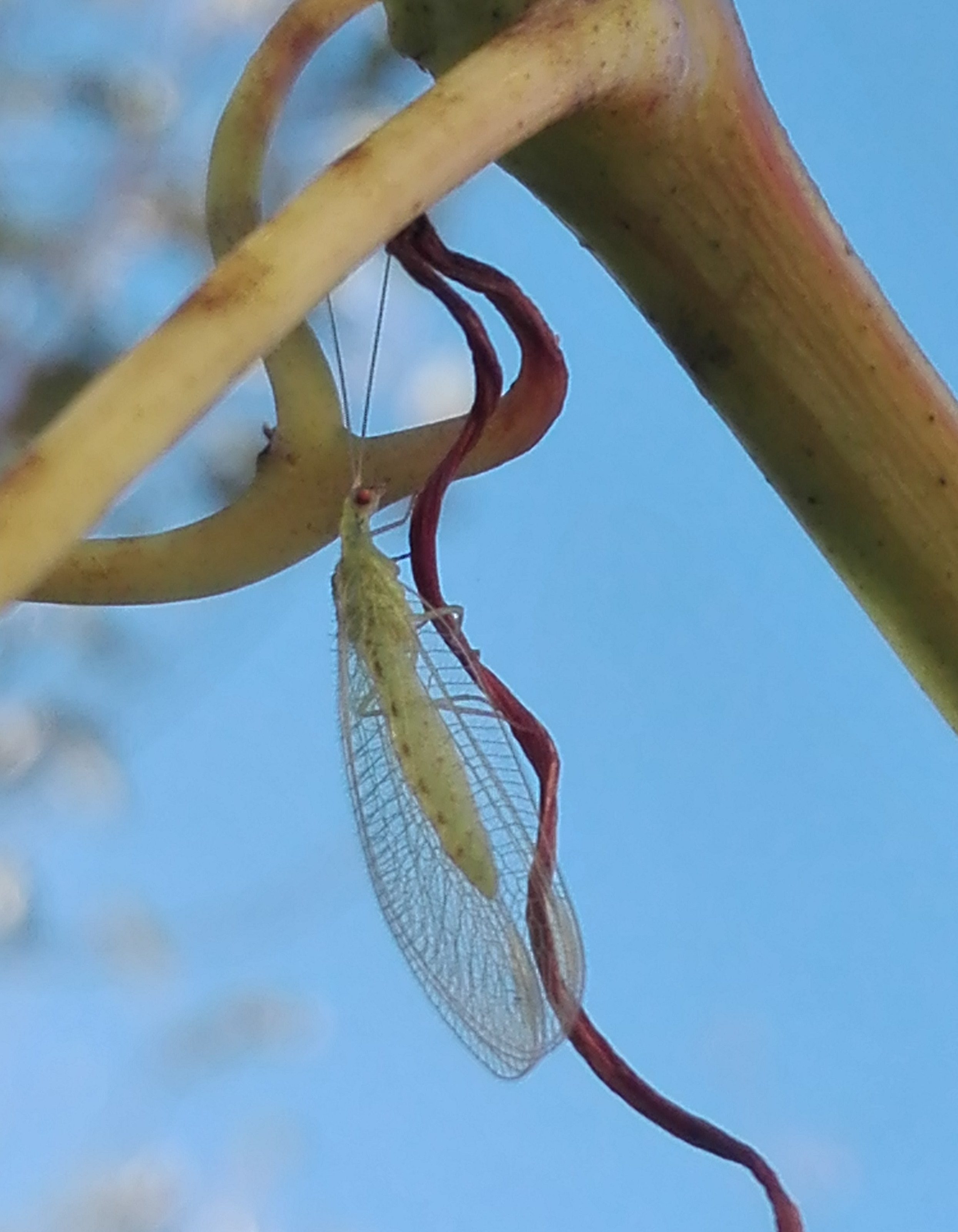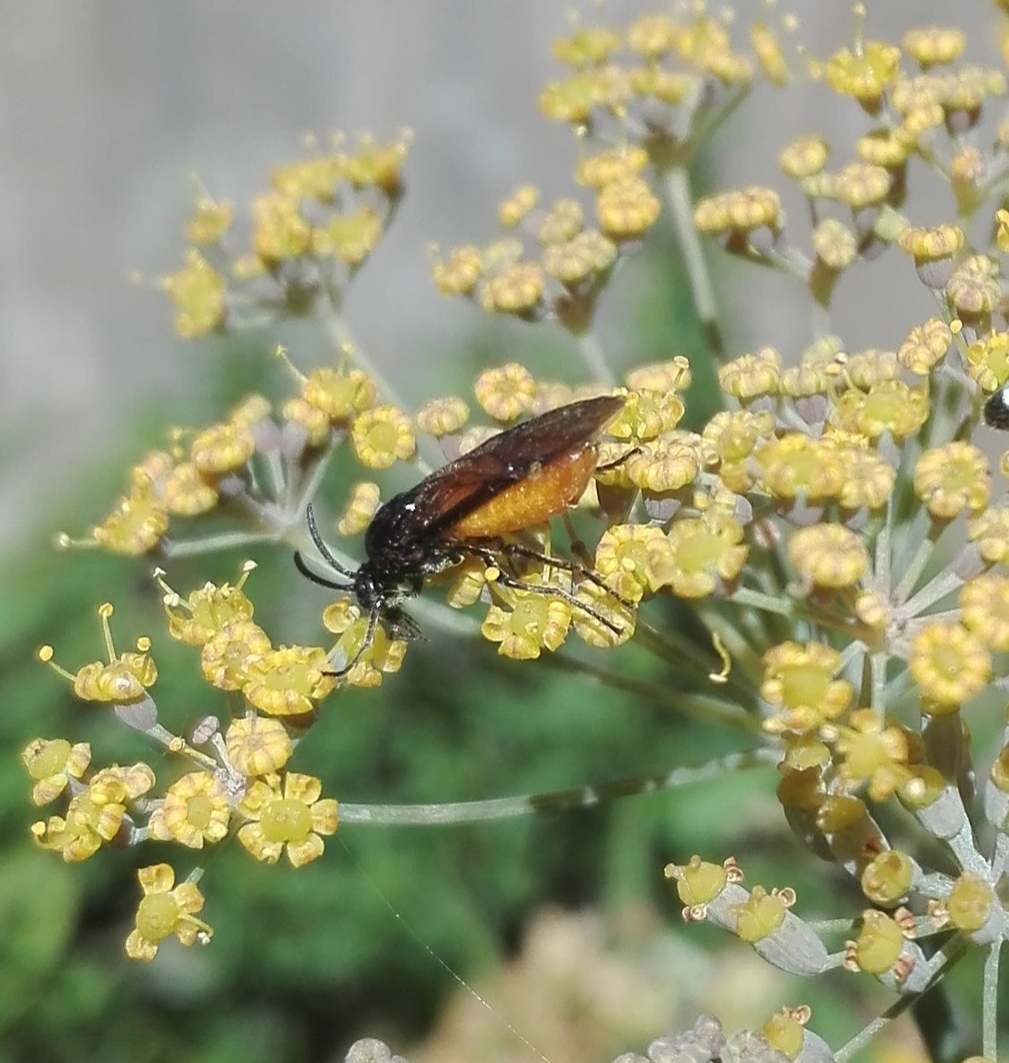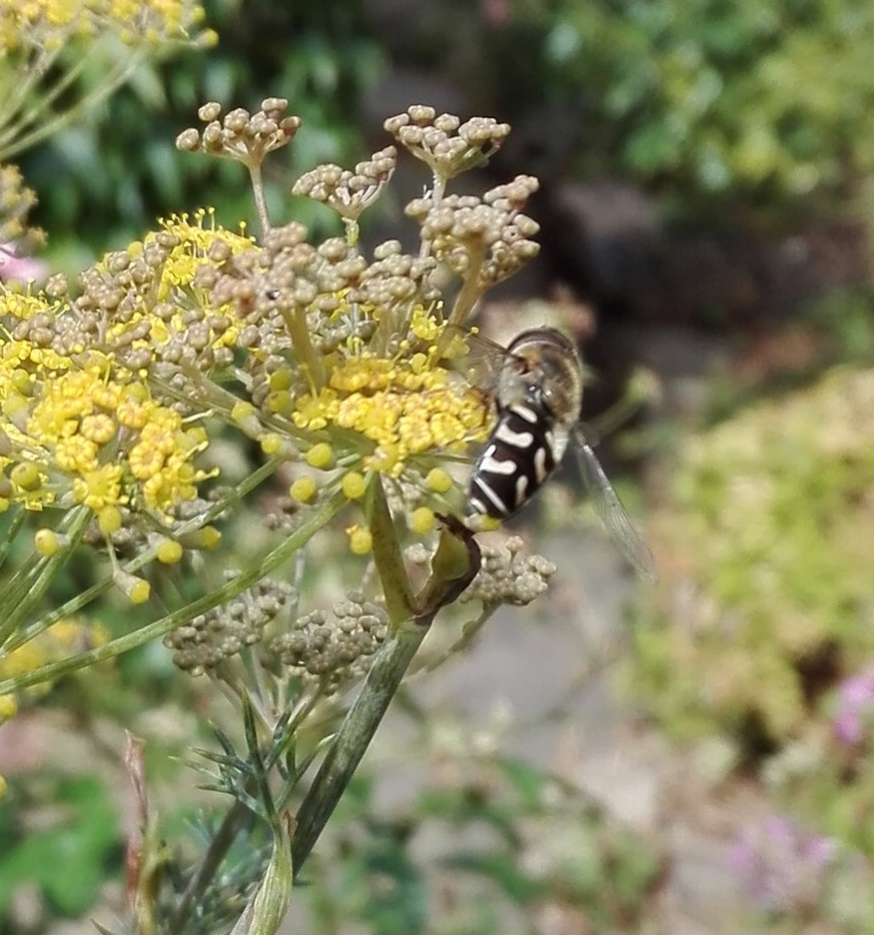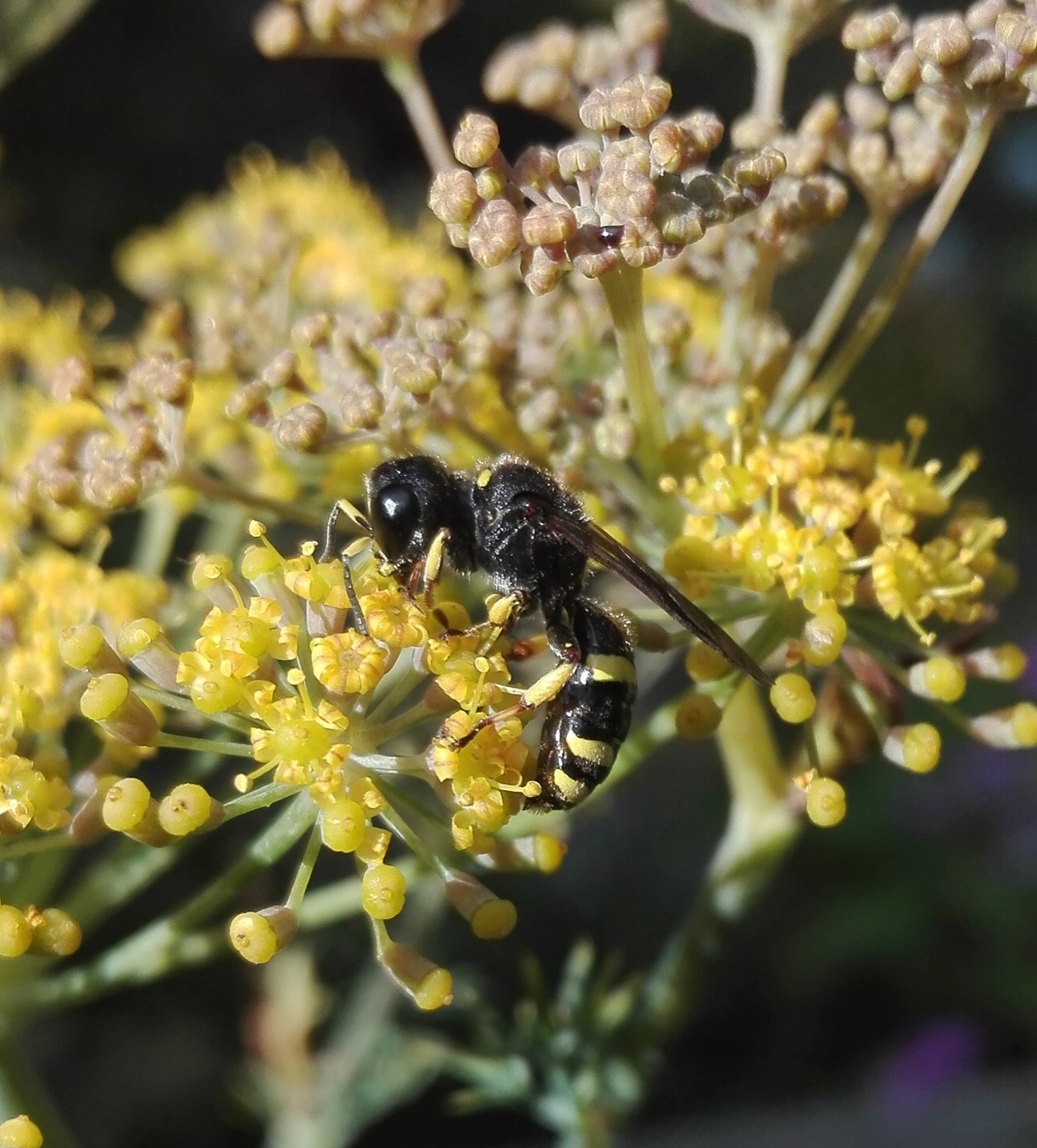When the sun shines the number of insects on the flowers goes up. The current batch of pollinating insects seem to like yellow and orange best; the Goldenrod (which is just opening up) being hands down the most popular with many species.
Long hoverflies are one of the commonest species at this time, along with marmalade and white-footed hoverflies. I’ve also seen a few Thick-legged Hoverflies (Syritta pipiens), a species that I didn’t record last year.
The small bee is I believe a collettes, Colletes daviesanus. These are plasterer bees and nest, sometimes in large colonies, in the mortar on old walls. I’m sure they will like the soft lime mortar on my walls and apparently a big colony can eventually damage the fabric of the wall. The bristly, orange-marked fly is Eriothrix rufomaculata. The adults of this species are attracted to flowers, while their larvae are parasites of moth larvae.



